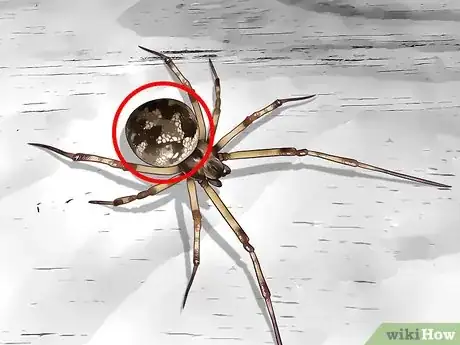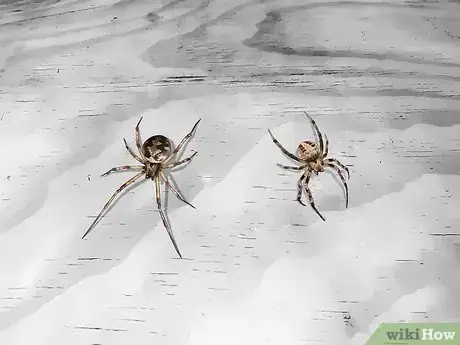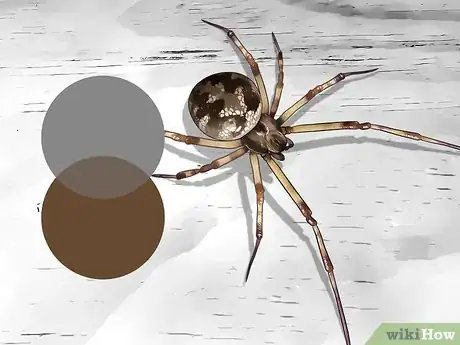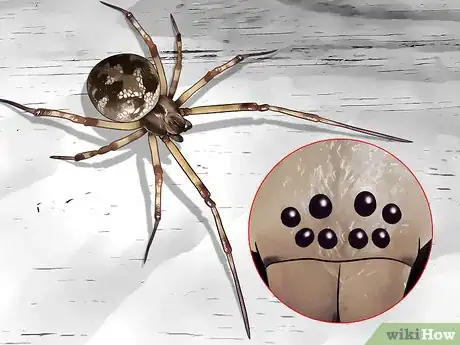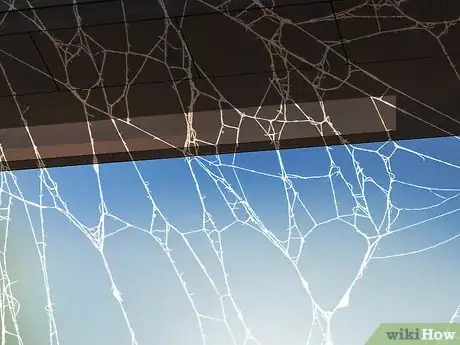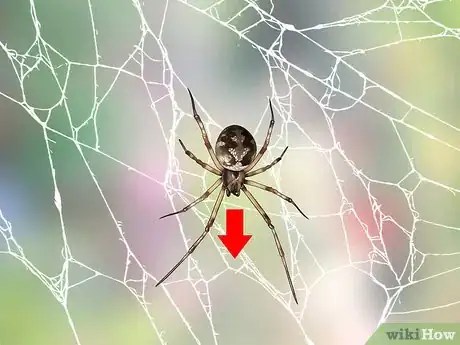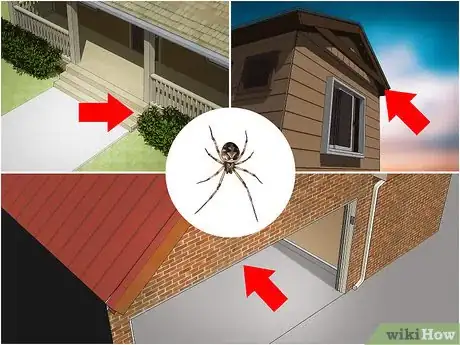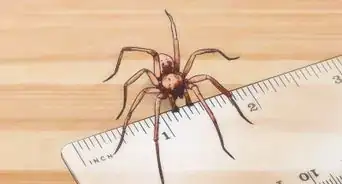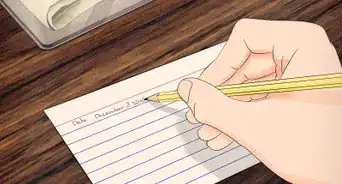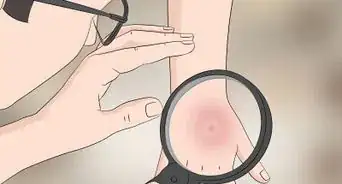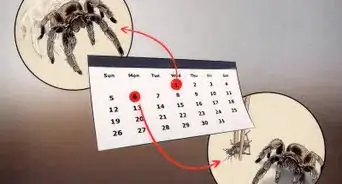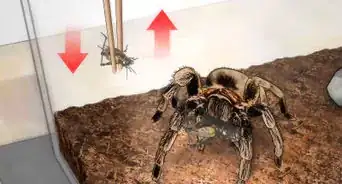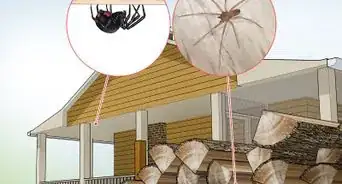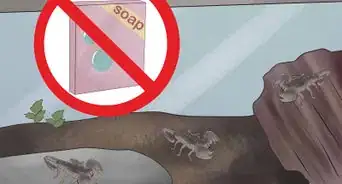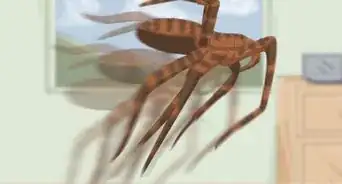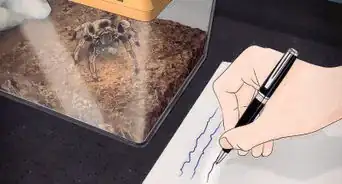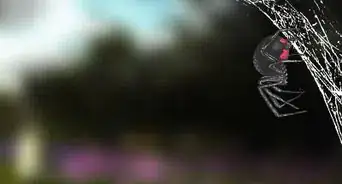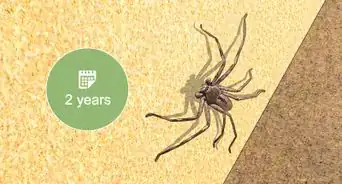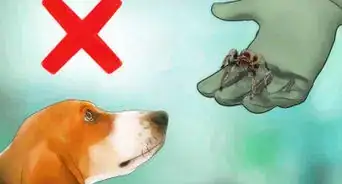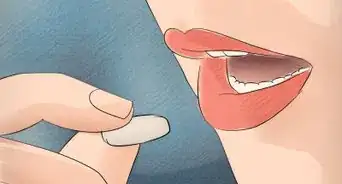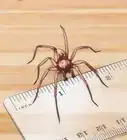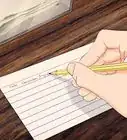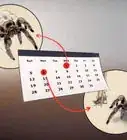This article was co-authored by wikiHow Staff. Our trained team of editors and researchers validate articles for accuracy and comprehensiveness. wikiHow's Content Management Team carefully monitors the work from our editorial staff to ensure that each article is backed by trusted research and meets our high quality standards.
This article has been viewed 148,594 times.
Learn more...
Cobweb spiders, part of the family Theridiidae, are commonly found in and around your home. The majority of them are harmless. There are over 2,300 species of cobweb spiders, and more than 230 in the US. They are named for their messy, irregular webs, which can help you identify them. You can also identify this type of spider by their round bellies, their long legs, and their tendency to live in dark corners.
Steps
Identifying Physical Characteristics
-
1Look for long legs. The legs of cobweb spiders are long and thin, with the first set of legs being the longest. The third set of legs is the shortest. The fourth set of legs have combs or tiny hairs.[1]
- The legs don’t have distinct divisions or spines on them. They look smooth instead of segmented.[2]
-
2Check for rounded abdomens. Cobweb spiders have round middle sections. They don’t have elongated or oval abdomens. They are often described as globular shaped.[3]Advertisement
-
3Look for a spider small to medium in size. There are thousands of species of cobweb spiders, and over 200 in the US. They will vary in size from small to medium. Many species are around ⅛ to ⅜ inches (3 to 10 mm) long.[4]
-
4Check for a dull color. There are a lot of different species of cobweb spiders with different markings. However, almost all cobweb spiders are brown or gray in color.[5]
- Some markings may be red dots, white stripes, yellow dots, or orange stripes.
-
5Notice two rows of eyes. One of the most distinguishing features on a cobweb spider is their eyes. The eight eyes form two rows across their head, each with four eyes each.[6]
Studying the Web
-
1Check for an irregular web. Cobweb spiders are sometimes called cobweb weavers because of the webs they create. These spiders make messy, irregular webs that have no distinct shape or form.[7]
- These webs will not be circular or have a neat pattern like many spider webs. Instead, it may have an uneven, non-circular shape, have large open spaces with clumps in other parts, or look like it's been disturbed.
-
2Look for an upside down spider. Cobweb spiders like to build their webs and then spend their time hanging upside down in the middle of the web. If you get close enough, check to see if the head of the spider is hanging down right in the center.[8]
-
3Expect cobweb spiders in dark corners. Cobweb spiders place their webs in dry, dark areas. They can be found in garages, eaves, attics, porches, sheds, and basements. They are also found just about everywhere indoors and around windows.[9]
- You may also find them under decks and houses, or in piles of outdoor debris or trash.
Community Q&A
-
QuestionHow did they get their name?
 Community AnswerThey weave what are known as cobwebs: the sticky, irregular webs found in attics and other places in homes that are not often visited by people.
Community AnswerThey weave what are known as cobwebs: the sticky, irregular webs found in attics and other places in homes that are not often visited by people. -
QuestionHow can I get rid of cobweb making spiders?
 Community AnswerTry using natural repellents like peppermint. You can also set small traps.
Community AnswerTry using natural repellents like peppermint. You can also set small traps. -
QuestionHow can I make my residence completely free from cobwebs?
 Community AnswerDust everywhere everyday.
Community AnswerDust everywhere everyday.
References
- ↑ http://bugguide.net/node/view/1960
- ↑ http://msuextension.org/flathead/documents/ag/spiders-insects/Idaho%20Hobo%20Spider%20bulletin.pdf
- ↑ http://msuextension.org/flathead/documents/ag/spiders-insects/Idaho%20Hobo%20Spider%20bulletin.pdf
- ↑ https://www.extension.umn.edu/garden/insects/find/common-spiders-in-and-around-homes/
- ↑ https://www.extension.umn.edu/garden/insects/find/common-spiders-in-and-around-homes/
- ↑ https://www.orkincanada.ca/pests/spiders/cobweb-spiders/
- ↑ https://www.orkincanada.ca/pests/spiders/cobweb-spiders/
- ↑ https://ipminstitute.org/wp-content/uploads/2016/06/Spider-Guide-Wegner-BASF-Revised-12-2-14.pdf
- ↑ https://ipminstitute.org/wp-content/uploads/2016/06/Spider-Guide-Wegner-BASF-Revised-12-2-14.pdf
About This Article
To identify a cobweb spider, look for a long, thin pair of legs in the front. Next, check for a rounded abdomen. Then, see if the spider is brown or gray in color. Cobweb spiders may also have red dots, white stripes, yellow dots, or orange stripes, but not always! Finally, look for eight eyes that form two rows across the spider's head. Cobweb spiders are usually small or medium in size, so if your spider is longer than an inch, it's probably a different kind. For tips on recognizing this spider's unique web, read on!

